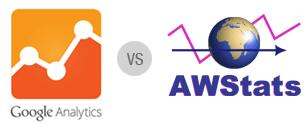AWStats and Google Analytics are both tools used for tracking website statistics, but they have some key differences:
1. Data Source:
- AWStats: AWStats analyzes server log files generated by the web server. It processes data from server access logs, which record every request made to the web server.
- Google Analytics: Google Analytics uses JavaScript code embedded in web pages to collect data directly from visitors' browsers. It relies on client-side tracking, which means it collects data as users interact with the website.
2. Real-time vs. Post-Processing:
- AWStats: It processes log data after the fact, which means it provides historical data about website traffic. It's not real-time and typically updates periodically (e.g., daily).
- Google Analytics: It provides real-time data, allowing you to see website activity as it happens, including current visitors, their location, and more.
3. Depth of Analysis:
- AWStats: Provides detailed server-side statistics, including information on server response codes, bandwidth usage, and the types of files accessed.
- Google Analytics: Offers in-depth insights into user behavior, such as pageviews, session duration, bounce rates, conversion tracking, and user demographics.
4. User-Friendly Interface:
- AWStats: Typically offers a more technical interface and is often used by server administrators.
- Google Analytics: Offers a user-friendly and visually appealing interface accessible to a wider range of users, including marketers and website owners.
5. Integration and Customization:
- AWStats: Generally requires less configuration and can be set up directly within the hosting environment.
- Google Analytics: Offers extensive customization options and can be integrated with various marketing and advertising platforms.
In summary, AWStats is server-centric and provides technical server log analysis, while Google Analytics is user-centric and offers a broader range of insights about user behavior. The choice between the two depends on your specific needs, technical expertise, and whether you want real-time data or historical analysis. Many websites use both tools for a comprehensive view of their web traffic.

